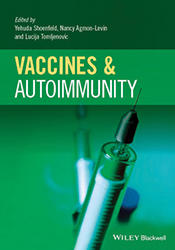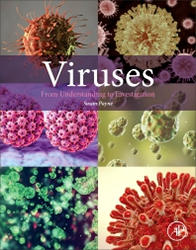Reviews
Issue: HIV and AIDS
06 November 2018 article


Vaccines and Autoimmunity
Edited by Y. Shoenfeld, N. Agmon-Levin & L. Tomlijenovic
Wiley-Blackwell (2015)
£136 ISBN 978-1118663431
Vaccines and Autoimmunity explores the role of vaccine adjuvants in inducing autoimmune or inflammatory response in genetically susceptible individuals, and the need for alternative adjuvants for ensuring vaccine safety. The authors specifically focus on aluminium based adjuvants that can trigger a syndrome known as autoimmune/inflammatory syndrome induced by adjuvants (ASIA).
The book has been divided into three broad sections. Part I focuses on types and mechanisms of adjuvants; suitable animal models for testing adjuvant effects; the role of metals in development of autoimmune responses; factors that influence autoimmune response; silicone and vaccine-induced autoimmune response in susceptible individuals; as well as safety, efficacy and recommendations of vaccines in patients having rheumatic diseases such as ARD and AIRD. Part II reviews literature on autoimmune conditions induced by MMR, HBV, HPV, meningococcal and pneumococcal vaccines. This section also covers vaccine-induced conditions such as antiphospholipid syndrome. Part III discusses diseases in which vaccines are known to be solicitors for certain diseases such as systemic lupus erythematosus, and whether they can be induced by vaccines such as MMR, HBV, etc.
The authors suggest that a preliminary screening including patient history is required for individuals prone to develop autoimmune diseases following vaccine administration. In such cases a benefit-risk assessment may be made. Besides, newer alternative adjuvants with fewer side effects should be developed. While in some cases, certain vaccine adjuvants do seem to trigger rare autoimmune response, in the majority of cases vaccines do not seem to mediate any inflammatory response. The authors also reiterated the fact that rare side effects post-vaccination do not undermine the safety and protection offered by vaccines in general. In many instances, the causal relation is not evident, while in others there have been only a very limited number of studies, which precludes any conclusion. The benefit of vaccination still outweighs the rare risk of vaccination, if any. This book will serve as an excellent resource for students and researchers interested in vaccine safety.
Arindam Mitra
Adamas University
The below review is published online in addition to those in the print or PDF copy of this issue of Microbiology Today.

Viruses: From Understanding to Investigation (1st Edition)
Written by S. Payne
Academic Press (2017)
£98.85 ISBN 978-0128031094
As a masters degree Programme Leader, I like to keep abreast with the latest textbooks in my area and I am aware of four, fairly similar, although very good, virology textbooks that have been published over the last couple of years. Viruses: From Understanding to Investigation is now the fifth. I must admit, I’m still a little perplexed by the title. It isn’t so different from the other recently-published textbooks, and is probably most similar to Molecular Virology of Human Pathogenic Viruses by W. Ryu, also published by Academic Press. In my opinion, the most significant difference between these books is that Viruses: From Understanding to Investigation is almost twice the price at time of writing. One might be prepared to pay extra for a more up-to-date book, but since these books are only a year apart, I do not understand why there is such difference in price. Having said that, Viruses: From Understanding to Investigation is a very good virology textbook, covering viral structures, interactions with the host cell, techniques used to study viruses, transmission, immunity, evolution and pathogenesis, before focusing in on details of each family of RNA and DNA viruses. The illustrations are very clear and engaging, making it a very attractive and informative textbook. I’m sure that enthusiastic undergraduate and postgraduate students will find this book very helpful in their understanding and investigation of viruses, but if they do purchase a textbook, I strongly suspect they will opt for a cheaper one.
Christopher Ring
Middlesex University
